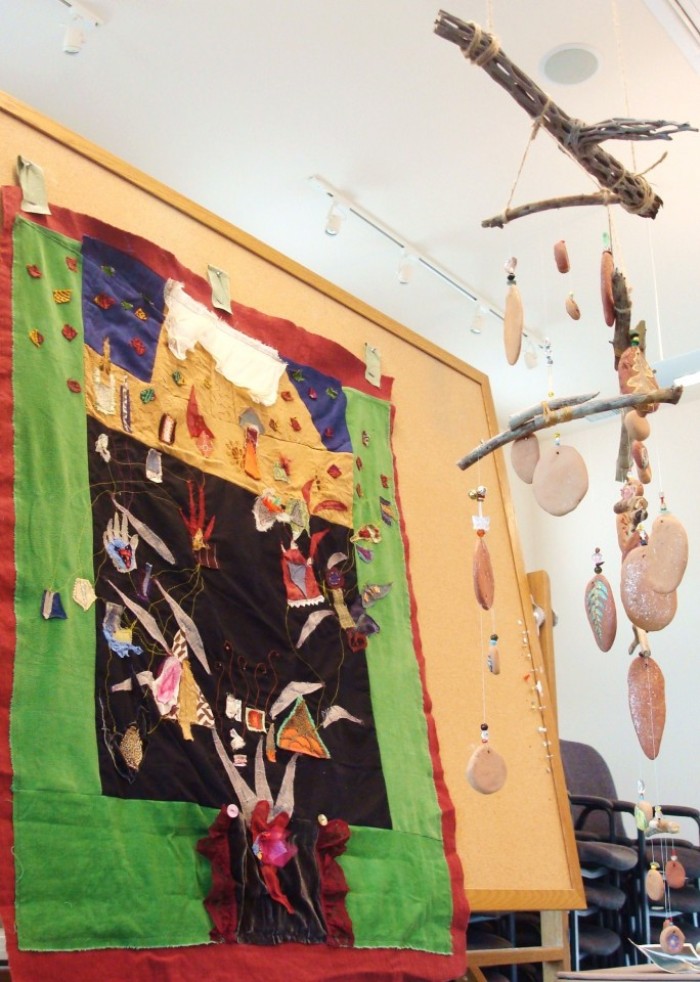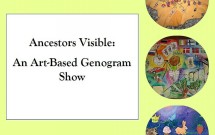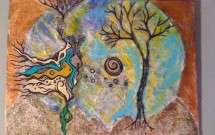
The idea seems simple, initially. When making a Genogram (kind of a family tree) use an image instead of a square or circle (how Genograms are usually done).
Each week in my Family Art Therapy course, one or two students shared their art-based Genograms. Never doubting our students’ creativity, I’m still happily surprised when Genograms take the form of mobiles, quilts, paintings or family belongings.
Using art in the Genogram process immediately adds a layer of meaning to the family tree or map. It’s one thing to draw an “X” through a circle representing Grandma and say “She died when I was ten.” It’s a whole other experience to represent Grandma as a bowl of pasta with angel wings and share that: “She always made this special pasta for me when I was sad. I gave her angel wings because I feel her presence as an angel, near me today.”
Such tender, bittersweet stories are shared in class. Family myths, strengths and cultural gifts emerge along with stories of divorce, abandonment and estrangement. The “emotional cut-offs” that Bowen spoke of in his family work are painfully clear in the blurry chalk pastel lines, broken twigs, and frayed cloth.
One may be attempting to stay in the “here and now” in life. We know the health of being present in the here and now. And yet, if the here and now is difficult or hopeless, it would seem helpful to look at what has been shared, consciously or unconsciously, through generations of family life. The impact of World War II, a Cultural Revolution and poverty-driven immigration, were themes still coloring my students’ Genograms.
A privilege always, to invite all these stories, colors and ancestors into the classroom.
Object Genogram, by Olivia Green
Featured Image, Quilt Genogram by Domonique Pozo, Mobile Genogram by Nicole Brown
 Southwestern College Santa Fe, NM
Southwestern College Santa Fe, NM






